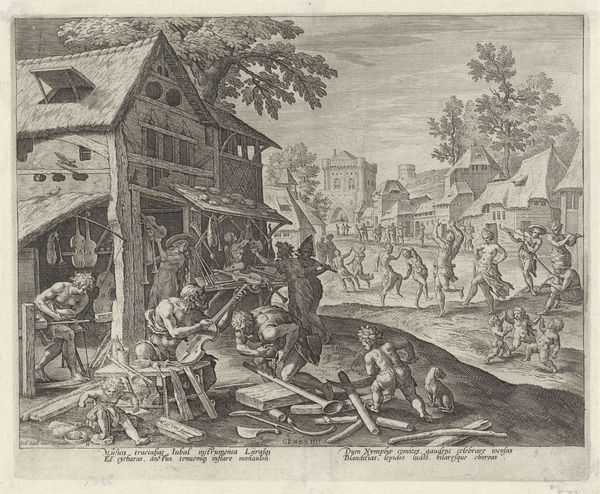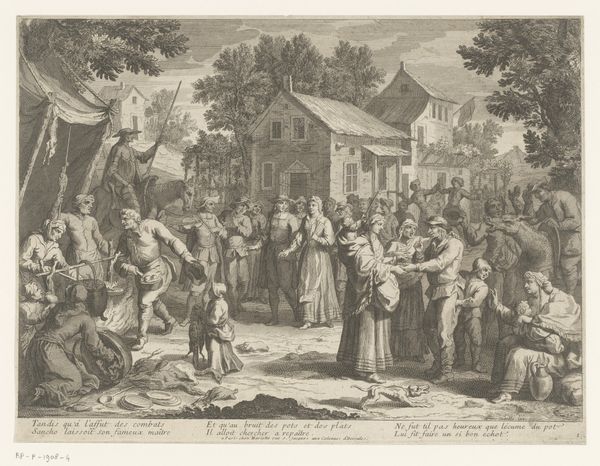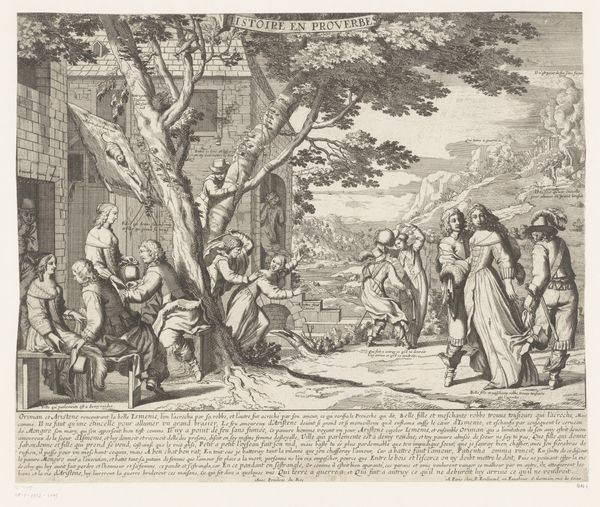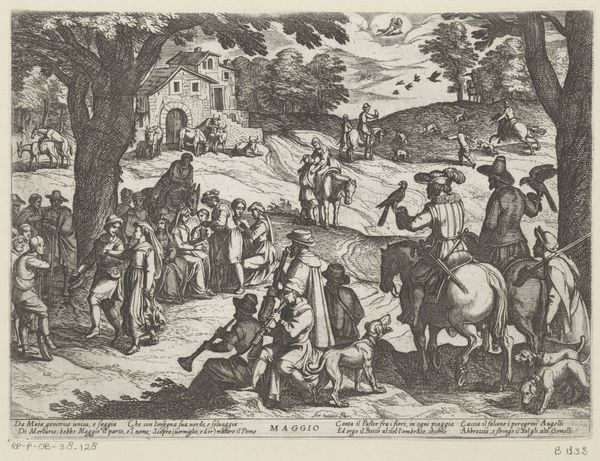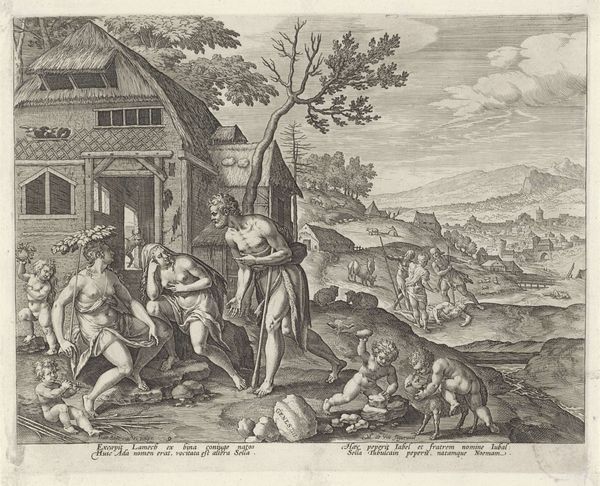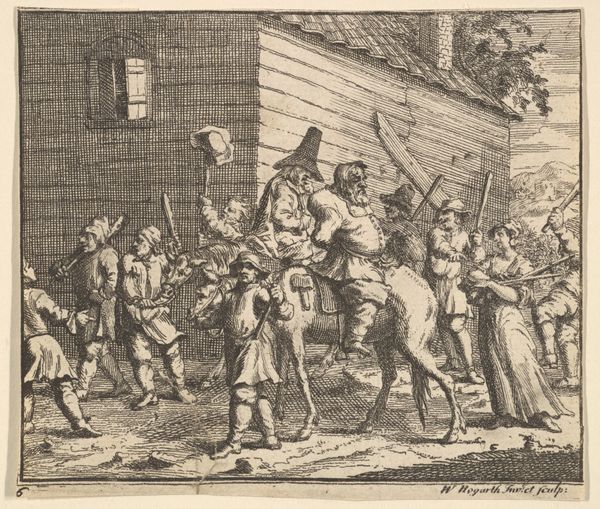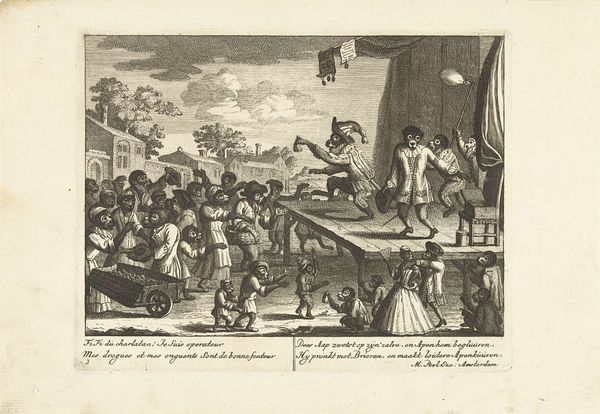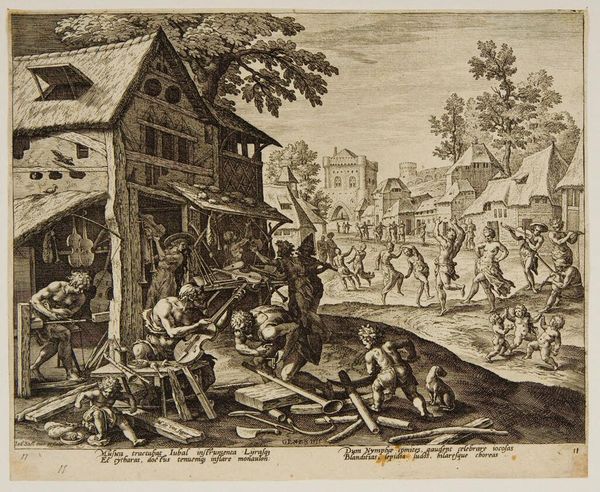
print, etching, engraving
#
narrative-art
#
baroque
#
pen drawing
#
mechanical pen drawing
# print
#
pen illustration
#
etching
#
old engraving style
#
line
#
genre-painting
#
history-painting
#
engraving
Dimensions: height 515 mm, width 598 mm
Copyright: Rijks Museum: Open Domain
Editor: Here we have Abraham Allard's "Blijdschap bij de Vrede van Utrecht, 1713," a print showcasing an etching and engraving. I’m struck by the sheer busyness of the composition, all those people! What particularly stands out to you? Curator: It’s not just the 'busyness', it's the *making* of that busyness. Look at the deliberate application of line, the way the engraving technique renders texture. Each etched line represents a specific action, a physical labor in the printmaking process itself that echoes the celebrations depicted. How was such accessible art consumed and distributed? Editor: That's a great point. Thinking about distribution, were these prints primarily for the wealthy or were they aimed at a broader audience, capturing a sort of "popular" sentiment about the peace? Curator: Exactly! We should consider the economics of printmaking. Cheaper materials meant wider distribution and reflected a shift in art consumption towards a more bourgeois audience. The social context is embedded in the materiality of the artwork. Consider how the celebration portrayed reinforces Dutch mercantile ambitions following the Treaty of Utrecht. What’s the relationship between this image and Dutch power at that time? Editor: So, you’re suggesting that even something seemingly simple like an etching is actually loaded with information about class and political power. I guess I always thought of art from this period as being more straightforward. Curator: Not just class and political power, but about production itself. Every stage of making this etching involved resources, labour, and distribution networks – consider those networks when thinking about accessibility. Every single line tells a part of the story in terms of materials and labour. Editor: I’m starting to see how much the materials and creation tell a story in themselves, beyond just what's depicted in the image. Thank you, this was really enlightening! Curator: Likewise! Focusing on the production reveals the painting beyond representation.
Comments
No comments
Be the first to comment and join the conversation on the ultimate creative platform.
